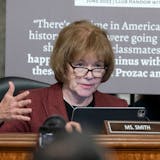Some Minnesota colleges are scrambling to figure out if they should extend their decision deadlines after the U.S. Department of Education announced it would be sharing students’ financial aid information with schools weeks later than anticipated.
“In the larger financial aid world, it is a very big deal and significantly changes timelines, especially for schools and their admitted students who are trying to make a decision about where they’re going to attend next year,” said Brian Lindeman, assistant vice president of Admissions and Financial Aid at Macalester College, which is so far sticking to its usual schedule.
In a typical year, nearly 18 million Americans fill out the Free Application for Federal Student Aid, a form overseen by the U.S. Department of Education that is used to determine which government loans and grants students should receive. Students can elect to share their information with colleges, which can then download the data and use it to determine if people are eligible for aid they offer as well.
But the U.S. Department of Education announced Tuesday that schools won’t be able to access that information until March — weeks later than anticipated. That will leave students with less time to compare competing offers before the May 1 decision deadlines that many colleges have in place.
“It’s a big deal, and it’s looming larger and larger,” said BG Tucker, senior director of programs for College Possible Minnesota, an organization that aims to help students from underinvested communities access higher education. “My biggest concern is that this is going to discourage and dissuade families.”
National organizations representing financial aid officers were quick to express their frustration.
“These continued delays, communicated at the last minute, threaten to harm the very students and families that federal student aid is intended to help,” Justin Draeger, president of the National Association of Student Financial Aid Administrators, said in a statement.
The U.S. Department of Education typically opens the FAFSA to students in October, and college aid offices are often able to start downloading their information a couple of weeks later. This year the department attempted to update and streamline the form and didn’t open it until late December.


